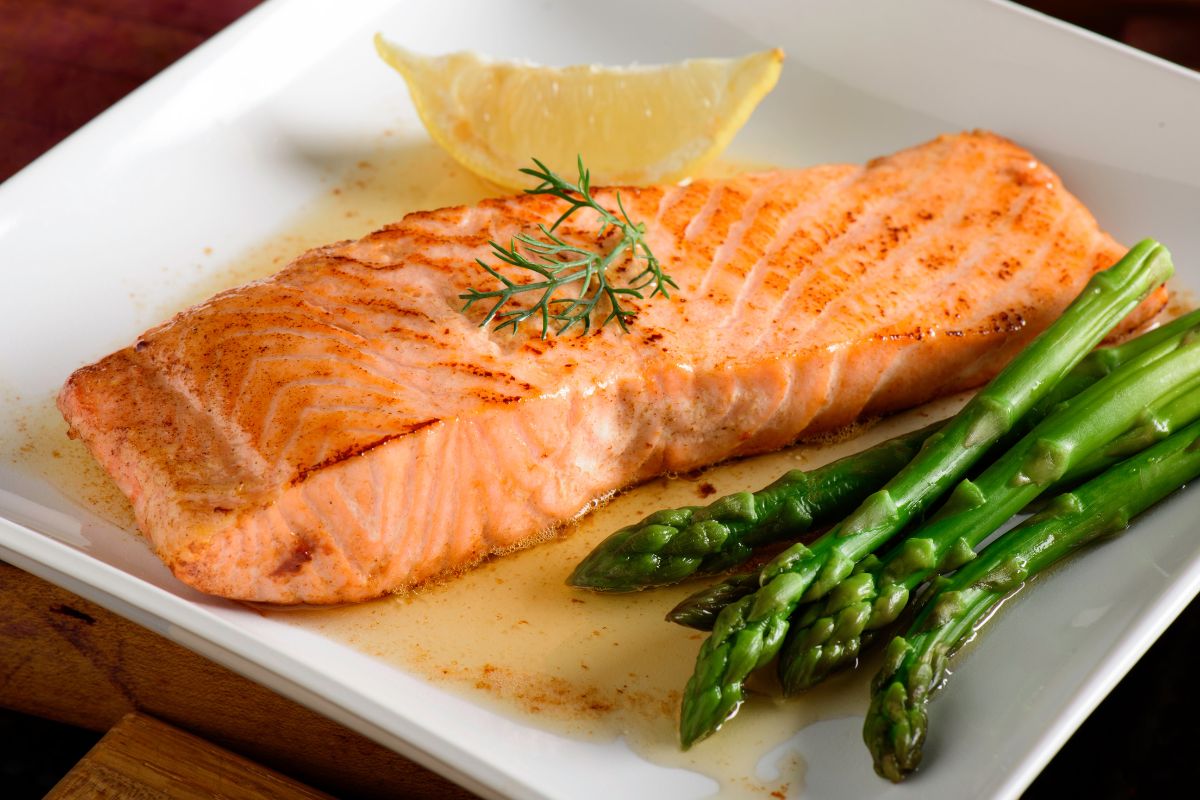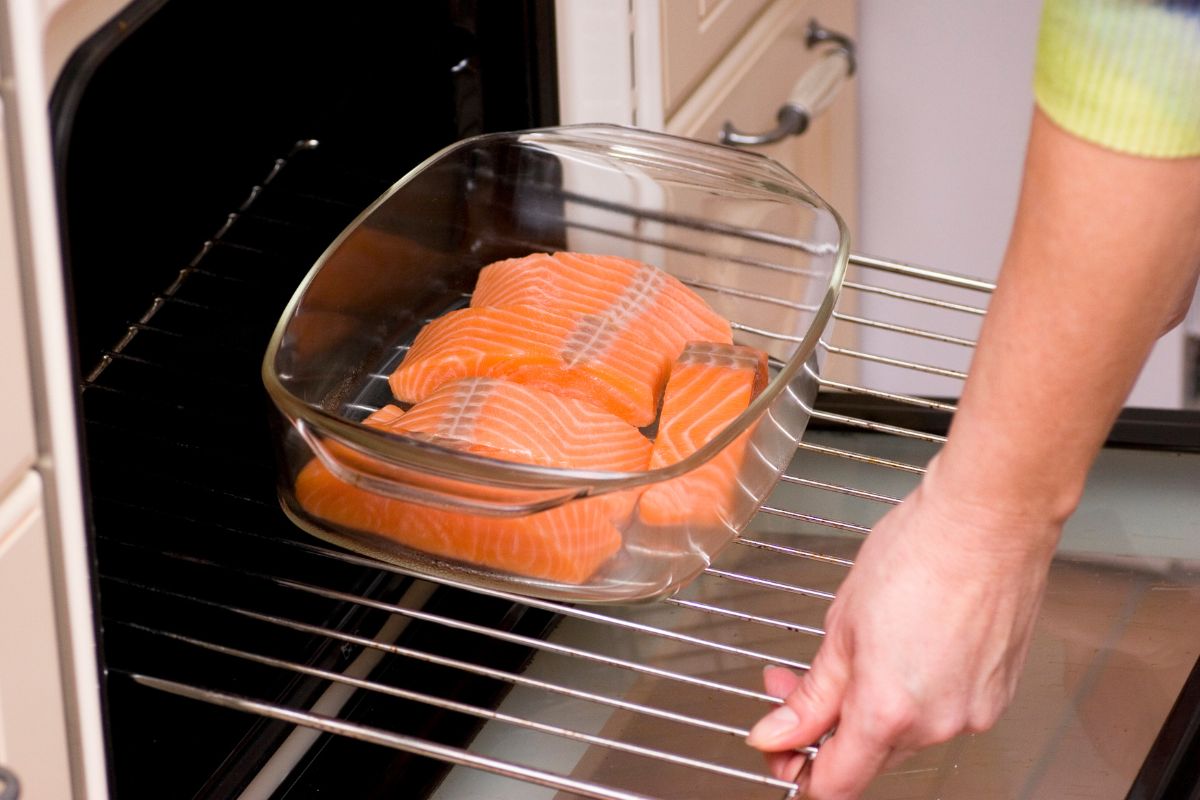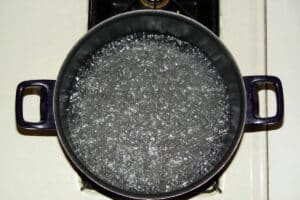Do you want to know what the correct salmon internal temperature is? Maybe your salmon isn’t turning out quite right and you want to know why?

Or are you curious about salmon’s internal temperature and want to know more? No matter the question that brought you here today, we have the answer for you.
Finding out what the correct internal temperature is for salmon can be tricky, especially if you have never cooked it before. You head online for some guidance but are met with page after page of conflicting information.
Disappointed and overwhelmed, you are left unsure where to turn or who to trust. How will you know the correct salmon internal temperature now?
Well, you can turn to us for the answers you need! Today we are here to tell you the correct internal temperature for salmon to help you cook the best salmon every time!
Keep reading to find out the internal temperature and everything else you need to know about cooking salmon.
Let’s not delay a moment longer and get you the answers you need now!
What Internal Temperature Should Salmon Be Cooked To?
Salmon should have an internal temperature of 145 degrees Fahrenheit before you eat it. After salmon has cooked, its internal temperature will rise another five to ten degrees Fahrenheit, especially when it has been covered with a plate or foil to retain its heat.
This means you can cook salmon until its internal temperature reaches anywhere from 135 to 140 degrees Fahrenheit.
Now, we bet you are wondering, how will I know the internal temperature of my salmon? Well, the easiest way to monitor the internal temperature is to use an instant-read thermometer.
These can be inserted into the center of your salmon, make sure this is the thickest part of your fish for best results.
This will give you an accurate reading of its internal temperature and help you judge if the salmon needs to be cooked for longer.
Another option is to use a dual-probe thermometer. These can be kept in the salmon and will continually monitor the internal temperature while it cooks.
It’s worth considering which you would prefer, and the price of them, before purchasing an internal thermometer if you don’t already have one.
Can I Eat Salmon At 120 Degrees?
While there are people that enjoy their fish cooked medium-rare, with an internal temperature of 120 degrees, it is below the FDA-recommended minimum temperature.
But this does not mean you shouldn’t eat salmon at 120 degrees. There are a few factors you should consider, though, before deciding if you want to eat salmon cooked to 120 degrees Fahrenheit.
We have detailed the considerations you should make below:
- Is the salmon fresh or does it have a fishy odor?
- Was the salmon purchased from a reputable source?
- Are you in a higher-risk health category or pregnant?
If you are pregnant or are in a higher-risk health category, do not eat salmon cooked to 120 degrees. If the salmon has a fishy odor or was purchased from a non-reputable source, do not eat the salmon until it has been cooked thoroughly.
Should I Cook Salmon On A Low Or High Heat?
Neither! Salmon should be cooked over medium to medium-high heat. This is because higher heat can cause the flesh to contract and char, leaving you with chewy and dry salmon, yuck!
By lowering the heat and working with medium heat, your salmon will be juicy and full of flavor, which is what we all want!
How Long Does It Take Salmon To Cook At 375 Degrees?
How long salmon takes to cook does depend on how thick it is. However, your salmon should generally take 10 to 20 minutes to cook in an oven at 375 degrees Fahrenheit.

If your filet is thin, you can expect it to take 10 minutes, but a thicker cut will take closer to 20 minutes.
To avoid your salmon being overcome we recommend checking it after it has been in the oven for ten minutes.
How To Tell Salmon Is Cooked?
There are a few ways you can check whether your salmon is cooked. The first is to look at the salmon, the flesh will change to opaque when it cooks.
It should be moist and flakey, but not wet. You can also use the following methods to check if your salmon is cooked:
- Insert an instant-read thermometer into the middle of the salmon, choosing the thickest part. The internal temperature should read between 135 and 140 degrees Fahrenheit. Its temperature will continue to rise to 145 degrees after cooking, making it perfect to eat!
- Slide the prongs of a fork between two segments of flesh. Twist slightly to expose the center, this should be translucent and semi-firm if it is cooked. If the center looks raw, return to the oven to cook for longer.
- Take your fingertip and press lightly on the thickest section of the fish. If it springs back, then it is done. If there is some jiggling, it still needs cooking. If the salmon is firm, it is overcooked and can be taken from the oven immediately.
How To Cook Salmon?
Before you go today, check out our guide on how to cook salmon perfectly! We have two methods below for you to check out now!

Both start by you thawing your salmon completely. Use paper towels to pat the salmon dry and remove excess moisture. Rub your salmon with olive oil before seasoning with salt and pepper.
Next, choose your method below and start cooking your salmon!
Cooking Salmon On The Stove
- Preheat a nonstick skillet over medium-high heat. This should take 2-3 minutes until it is hot. Coat your pan with some oil.
- Take a spatula or tongs to add the salmon skin side up to the pan.
- Cook for three minutes.
- Flip the salmon and cook for another three minutes.
- Check to see if the salmon is done and make adjustments if needed.
- Serve and garnish with lemon slices, lemon juice, and fresh herbs.
Cooking Salmon In The Oven
- Preheat your oven to 375 degrees Fahrenheit.
- Place an oven rack into the upper middle position of your oven.
- Line a baking sheet with parchment paper. Place your salmon skin-side down onto the paper.
- You can add some lemon slices and herbs here if you like, or seasoning of your own choosing.
- Place the tray into the oven and cook for 10 to 20 minutes depending on the thickness.
- Start checking on your salmon after 10 minutes of cooking, using an instant-read thermometer to check the internal temperature.
- When the internal temperature reaches 135 to 140 degrees Fahrenheit, remove the salmon from the heat. Leave wrapped in foil for a few minutes to reach 145 degrees Fahrenheit before serving.
Final Thoughts
And there you have it, the correct internal temperature for salmon is 145 degrees Fahrenheit. While this is the temperature we recommend for perfect salmon, you don’t need to cook it until it reaches that temperature!
The internal temperature of salmon will continue to rise by five to ten degrees Fahrenheit, so you don’t need to cook it until it reaches 145 degrees.
Instead, you can use an instant-read thermometer to check the temperature while your salmon cooks and remove it from the heat at around 135 to 140 degrees Fahrenheit.
The temperature of your salmon will continue to rise, leaving you with perfect salmon every time.
And if you are unsure how to tell if your salmon is cooked, be sure to use the guidance we outlined earlier for you.
Happy cooking!







